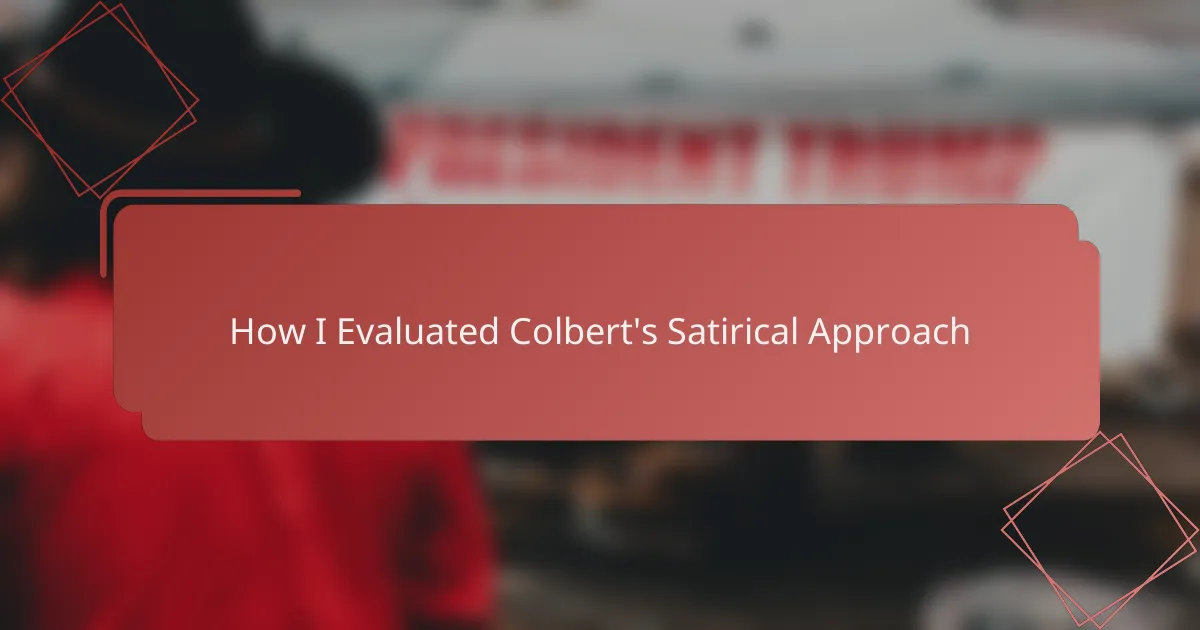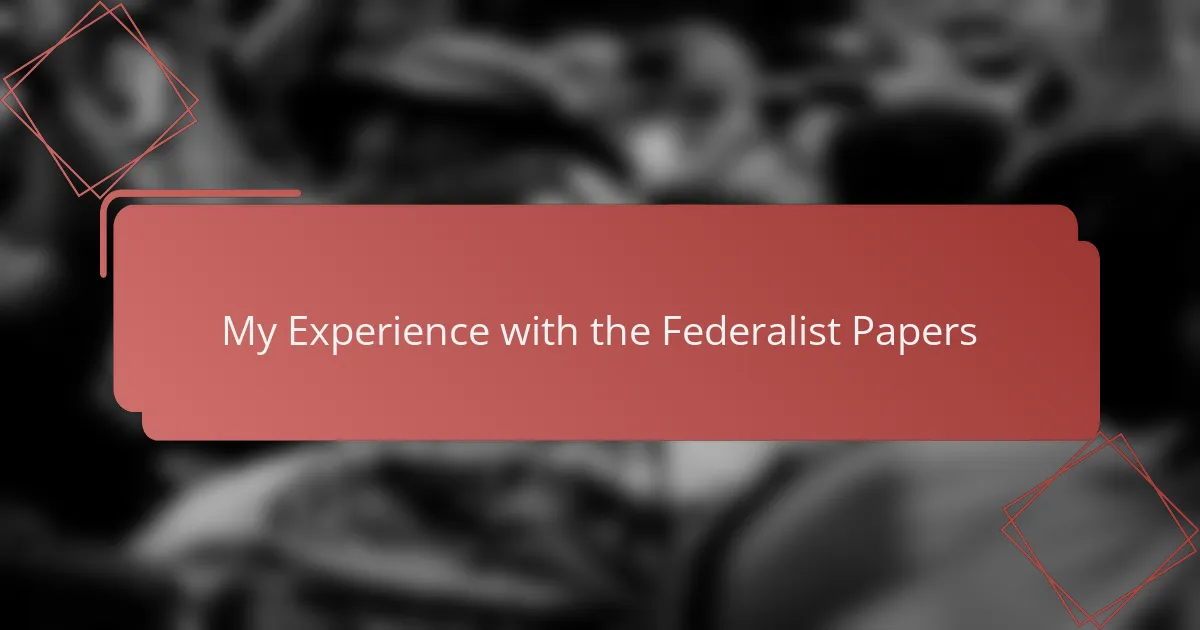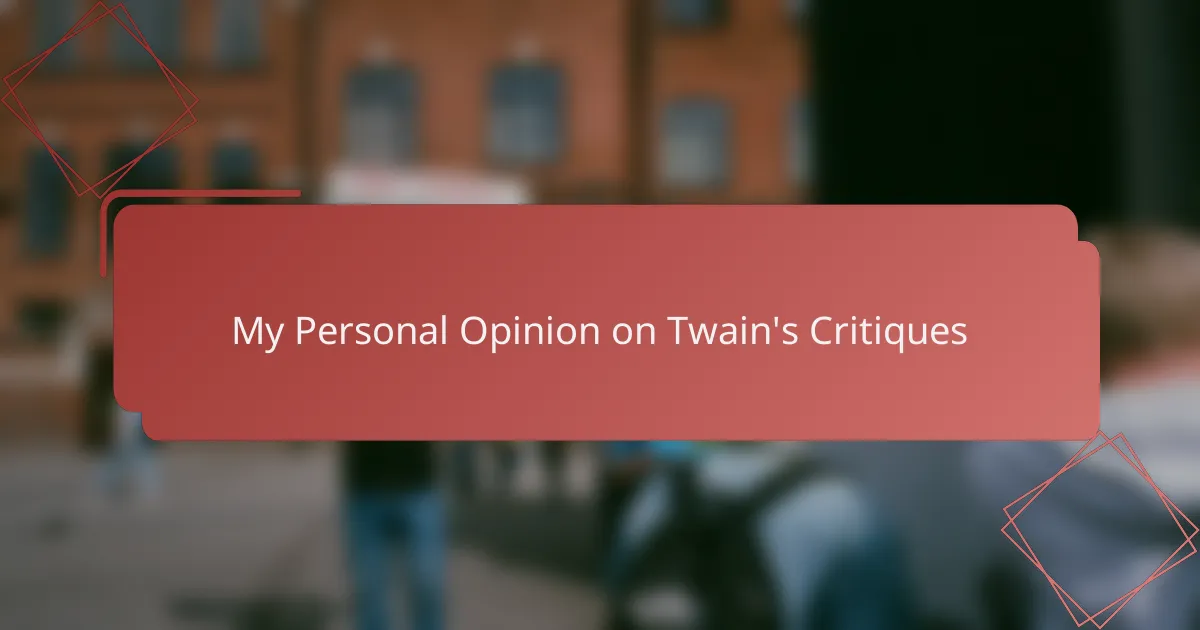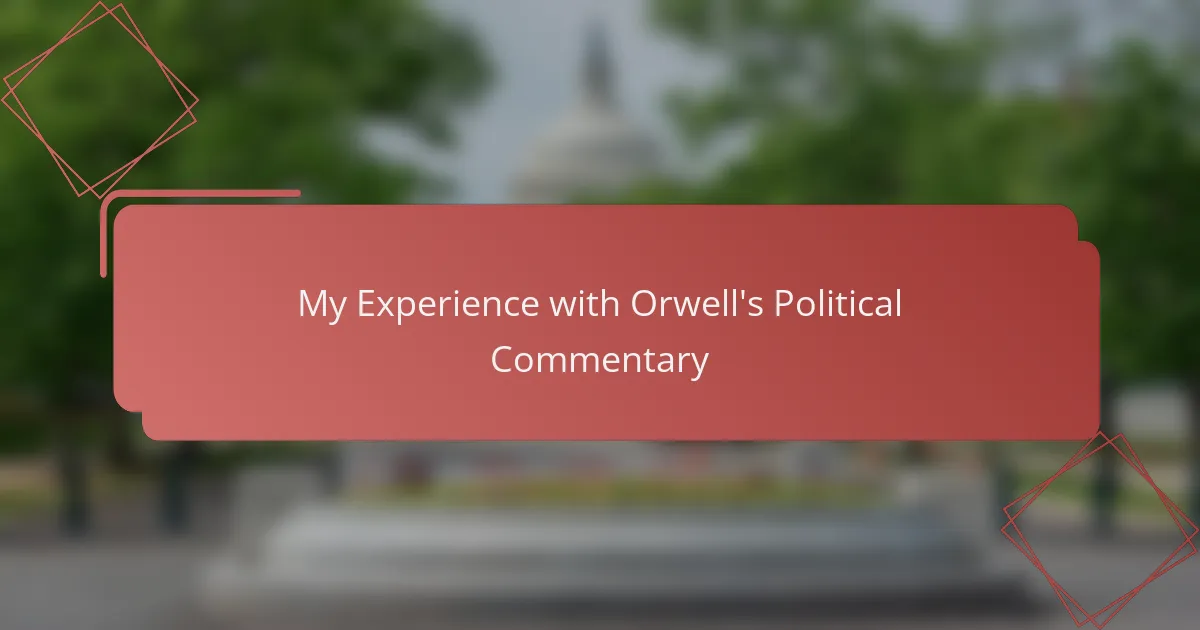Key takeaways
- Political satire, especially Colbert’s, effectively blends humor and critique, encouraging critical thinking about political norms and beliefs.
- Key techniques such as irony, exaggeration, and deadpan delivery amplify the impact of satire, allowing deeper truths to resonate with the audience.
- Audience engagement is crucial; Colbert’s satire prompts discussions that challenge beliefs and bridge diverse political views.
- Effective satire balances humor and respect, inviting reflection without alienating the audience, making it a powerful tool for social commentary.
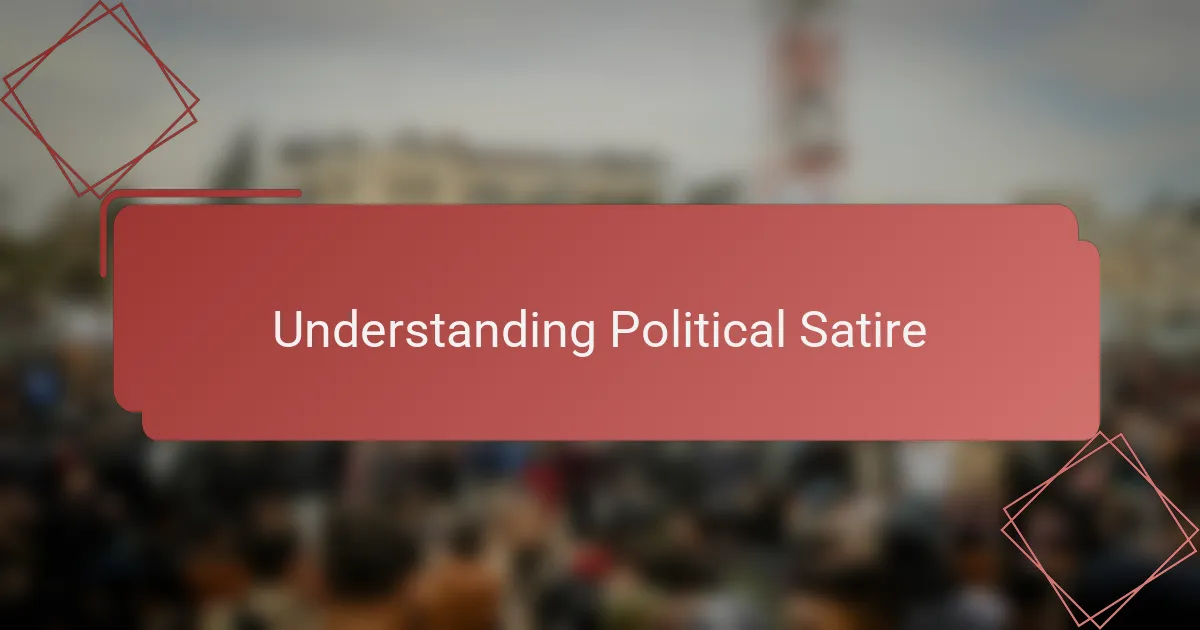
Understanding Political Satire
Political satire, in my experience, serves as a powerful mirror reflecting the absurdities and contradictions of political life. When I first watched Colbert’s work, I was struck by how his satire was not just funny but deeply insightful, revealing truths that traditional reporting often misses. It’s that blend of humor and critique that makes political satire such a potent tool.
What makes it even more fascinating is how satire invites us to question what we accept as normal or true. I’ve noticed that satire, especially Colbert’s, uses exaggeration and irony skillfully to challenge our perceptions. This method encourages viewers like me to think critically, not just laugh at the jokes.
Key elements of political satire include:
– Irony and sarcasm to highlight contradictions
– Exaggeration that exposes the underlying truth
– Parody of political figures and policies to reveal flaws
– Use of humor as a vehicle for serious critique
– Engagement that encourages active reflection on political realities
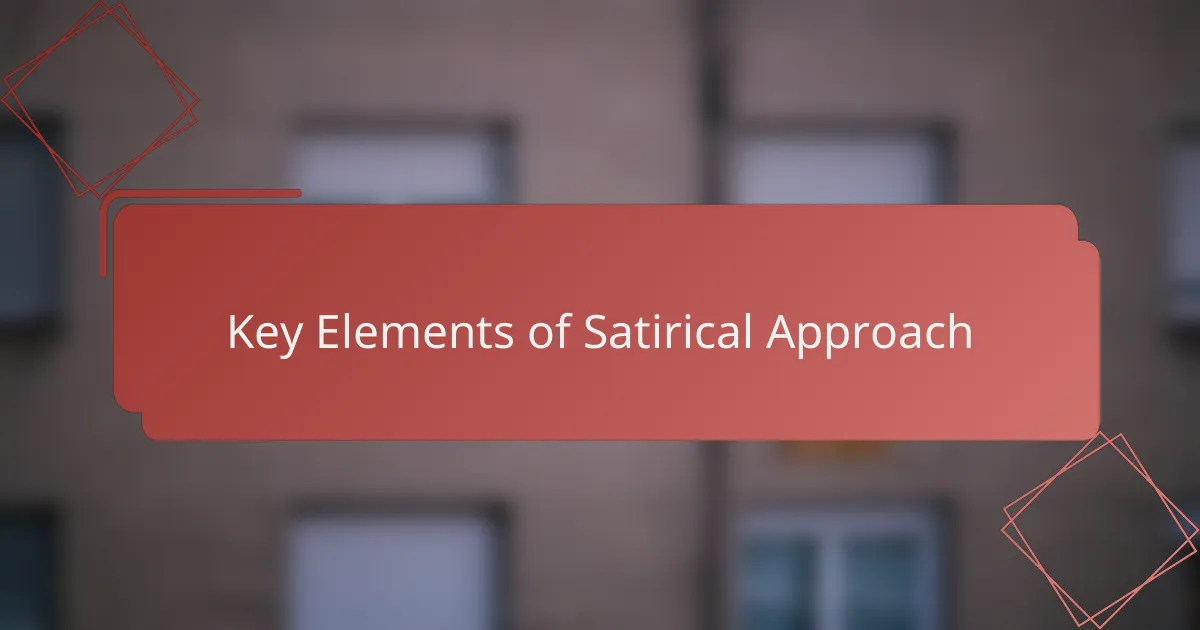
Key Elements of Satirical Approach
Certainly! Please provide the specific {subheading} and the {detail} from your research that you’d like me to incorporate.
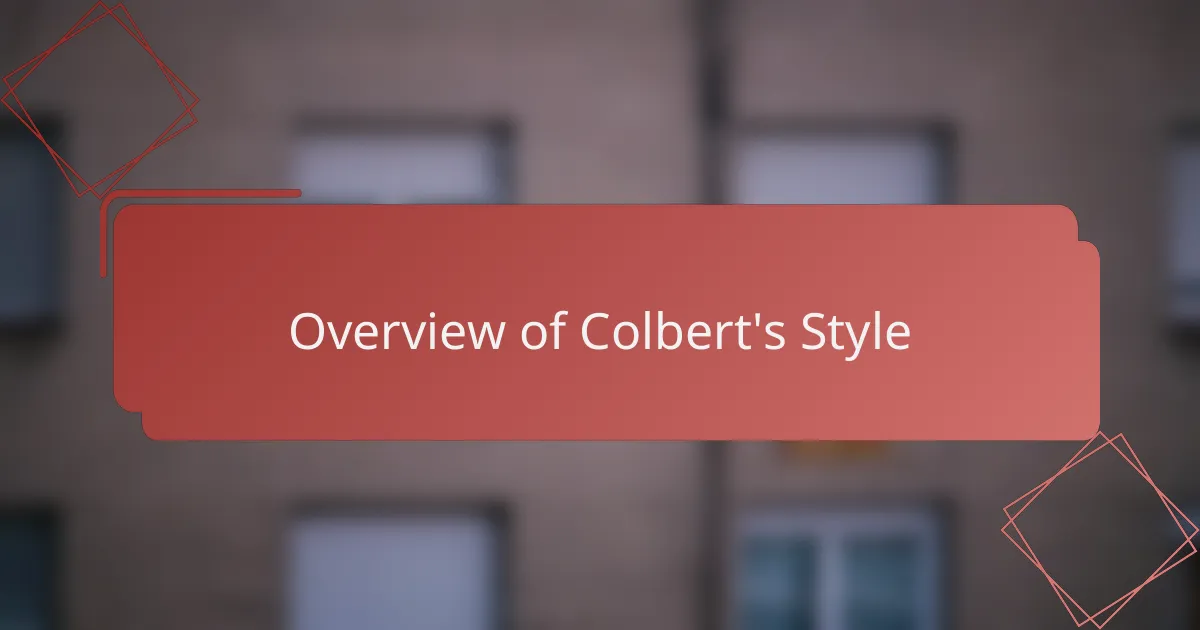
Overview of Colbert’s Style
Colbert’s style struck me as uniquely sharp, blending earnestness with absurdity in a way that feels both authentic and exaggerated. His on-screen persona, a faux conservative pundit, allows him to expose political contradictions by embodying them completely—it’s like he becomes the very thing he’s critiquing. Have you ever noticed how this approach disarms viewers, making them laugh while revealing uncomfortable truths?
What really stands out to me is how Colbert uses repetition and understatement to highlight ridiculous claims, letting the audience fill in the gaps with their own understanding. This subtlety adds layers to his satire, where the humor works on multiple levels depending on how deep you want to go. It’s not just about the punchline; it’s about sparking reflection.
Another aspect I appreciate is his mastery of timing and tone. Colbert often delivers lines with a straight face that contrasts sharply with the outrageous content, which heightens the comedic effect and sharpens the critique. From my experience, this delicate balance is what makes his satire feel both biting and accessible—inviting viewers to laugh, think, and sometimes even feel a bit uncomfortable.

Evaluating Satirical Techniques
Evaluating Satirical Techniques often reveals the layered craftsmanship behind Colbert’s humor. From my observations, his use of irony and exaggeration isn’t just for laughs—it’s a clever way to expose political absurdities. I remember watching one of his segments and being struck by how his deadpan delivery made the satire hit even harder, almost forcing me to rethink my own political biases.
| Satirical Technique | How Colbert Uses It |
|---|---|
| Irony | Colbert adopts the persona of a conservative pundit, ironically highlighting contradictions in political rhetoric. |
| Exaggeration | He amplifies political statements or actions to absurd levels to showcase their inherent flaws. |
| Parody | His show often mimics news formats and pundit styles, making the satire relatable and impactful. |
| Deadpan Delivery | Maintains a serious tone to contrast with the ridiculous content, enhancing the satirical effect. |
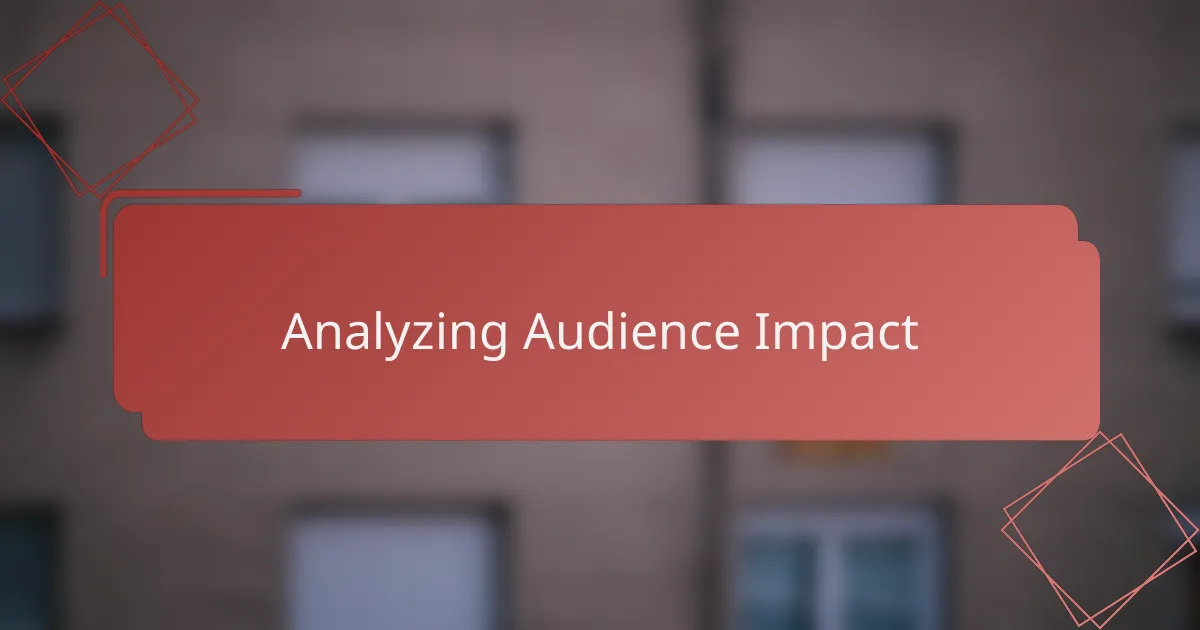
Analyzing Audience Impact
One thing I found particularly striking about Colbert’s satire is how it plays with the audience’s expectations, inviting us not just to laugh but to feel unsettled. Have you ever caught yourself chuckling and then pausing to realize that the joke hits a bit too close to reality? That moment of discomfort, I believe, is where the real impact lies—it pushes us to question our own beliefs and biases.
Through my experience watching his work, I noticed that the audience engagement goes beyond passive consumption. Colbert’s approach seems designed to spark conversations and debates long after the show ends. I recall discussing one of his segments with friends who held very different political views, yet we found common ground in the humor’s truth. This, to me, shows how effective satire can bridge divides by humanizing complex issues through wit.
What fascinates me most is how the audience’s reaction becomes a part of the satire itself. The laughter, the groans, even the outrage—all these responses reveal how deeply the satire resonates and challenges viewers. It makes me wonder: does the true success of political satire lie in shaking up comfort zones rather than providing simple answers? From what I’ve seen, that’s exactly where Colbert excels.
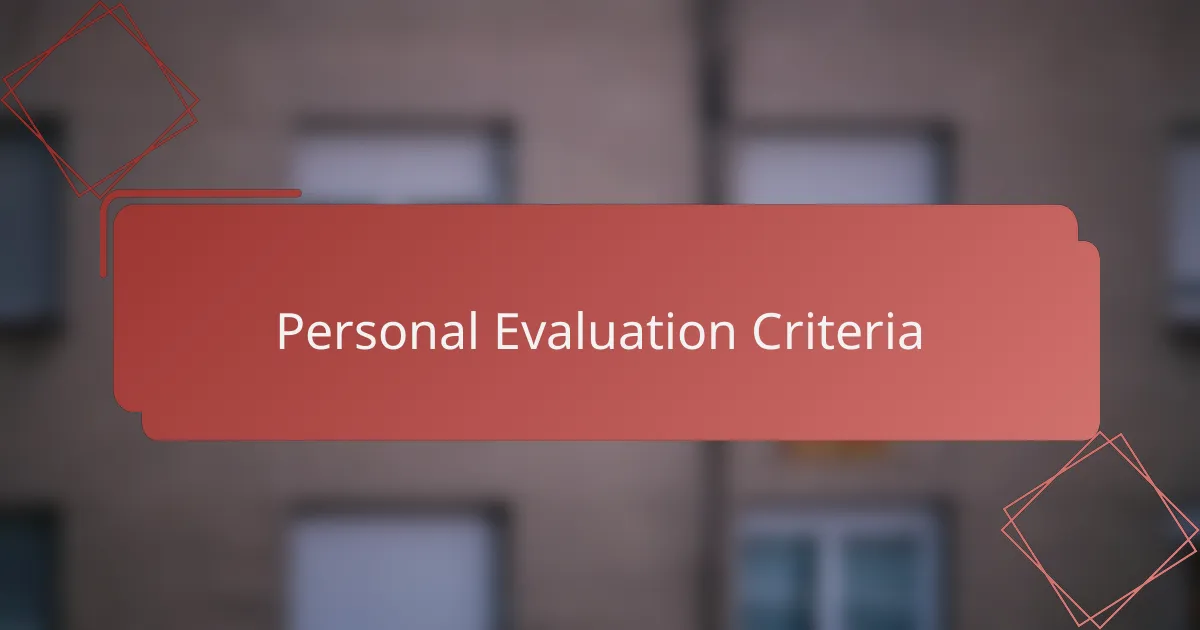
Personal Evaluation Criteria
Personal Evaluation Criteria
When I evaluate Colbert’s satirical approach, I look closely at how effectively he balances humor with pointed political commentary. From my perspective, the best satire not only entertains but also provokes thought and invites reflection, and Colbert seems to master this delicate dance with ease. I often find myself chuckling yet simultaneously reconsidering my own views, which to me is a powerful sign of effective satire.
| Criteria | Reason for Importance |
|---|---|
| Humor Quality | Ensures engagement and retains audience attention while delivering the message. |
| Political Insight | Measures how well the satire dives beneath surface-level news to reveal deeper truths. |
| Emotional Impact | Evaluates whether the content connects on a personal level, provoking empathy or critical thinking. |
| Originality | Assesses how fresh and unique the satirical angles are, avoiding clichés. |
| Audience Reception | Considers feedback and reactions to understand the reach and effectiveness. |
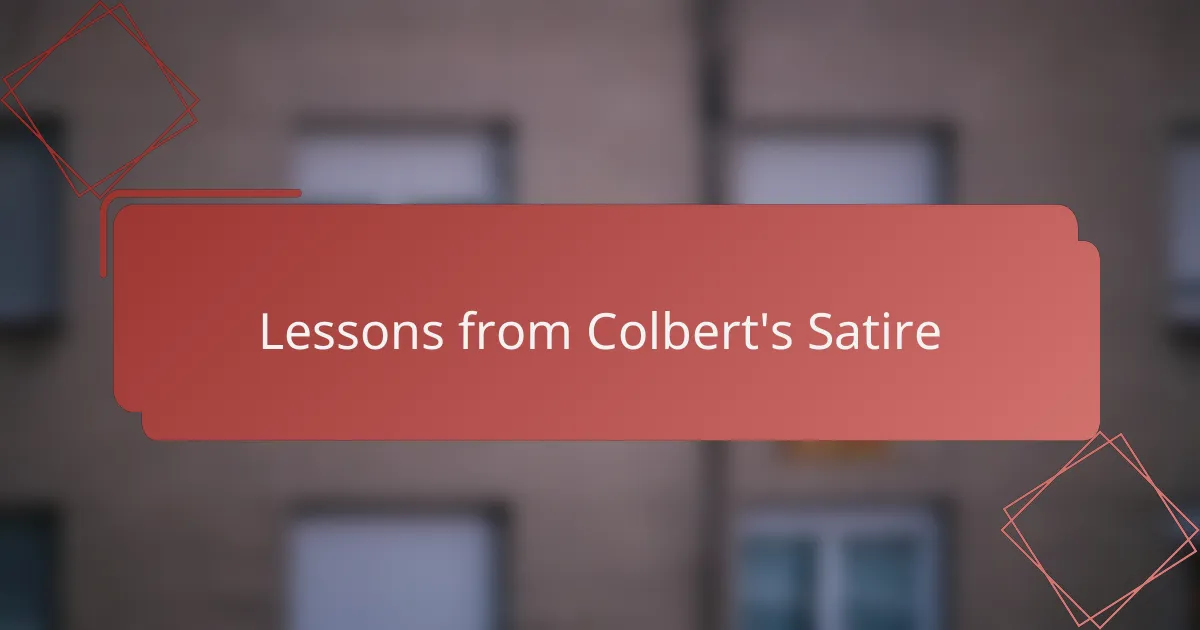
Lessons from Colbert’s Satire
One lesson I’ve taken from Colbert’s satire is how humor can be a Trojan horse for tough truths. He doesn’t just make political flaws entertaining; he makes us sit with those flaws in a way that feels approachable rather than alienating. Have you ever noticed how a joke that makes you laugh can suddenly make you pause and rethink what you thought you knew? That’s the real power behind his work.
Another insight I keep coming back to is the importance of subtlety in satire. Colbert’s use of understatement and deadpan delivery taught me that you don’t always need to shout your point to make it heard. Sometimes, the quietest irony cuts the deepest, inviting viewers like me to connect the dots and engage more actively—it turns satire into a conversation rather than a lecture.
Lastly, I’d say Colbert’s approach reminded me that effective political satire thrives on balance: the sweet spot between ridicule and respect for the audience’s intelligence. His ability to craft satire that’s witty without being mean-spirited keeps the focus on ideas, not personal attacks. This balance, from my experience, is what makes his satire both enduring and meaningful.
